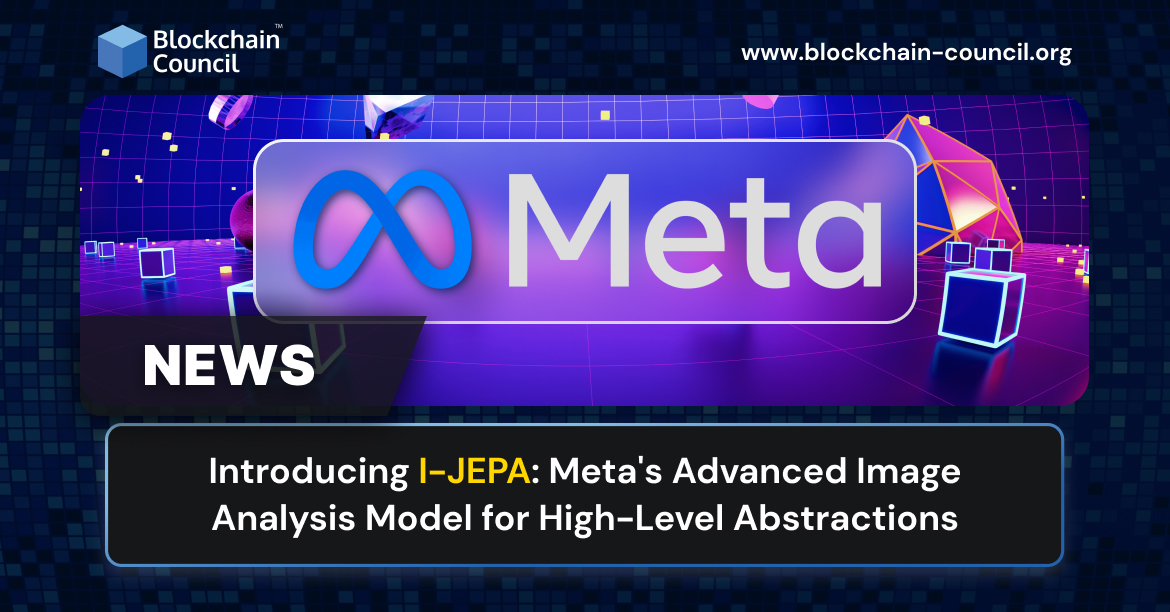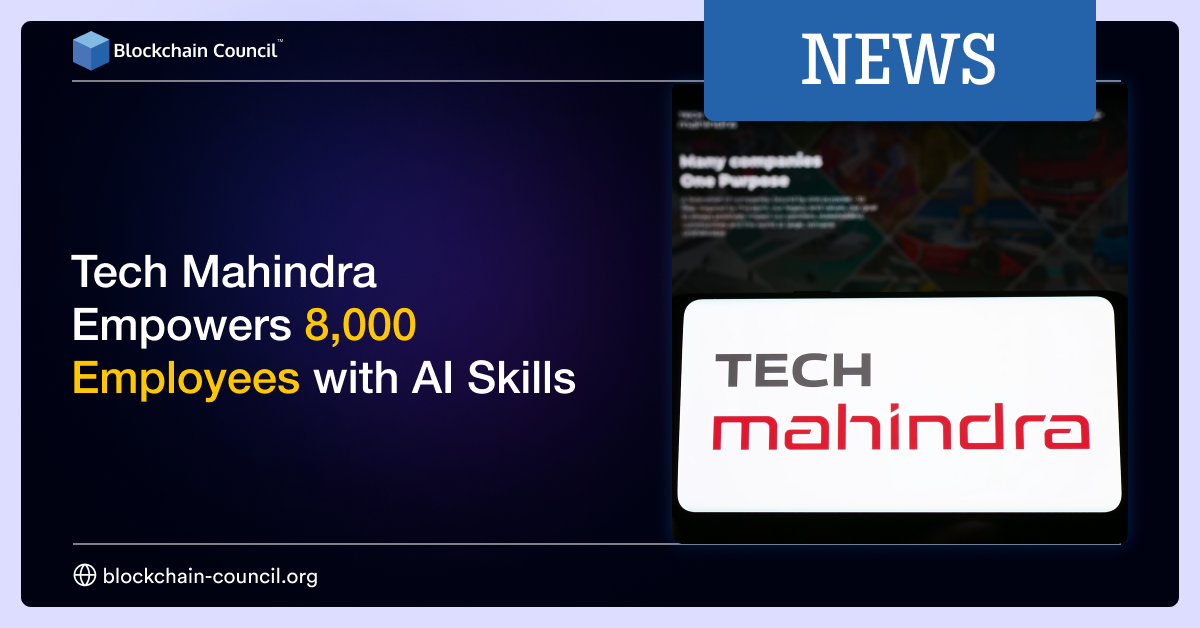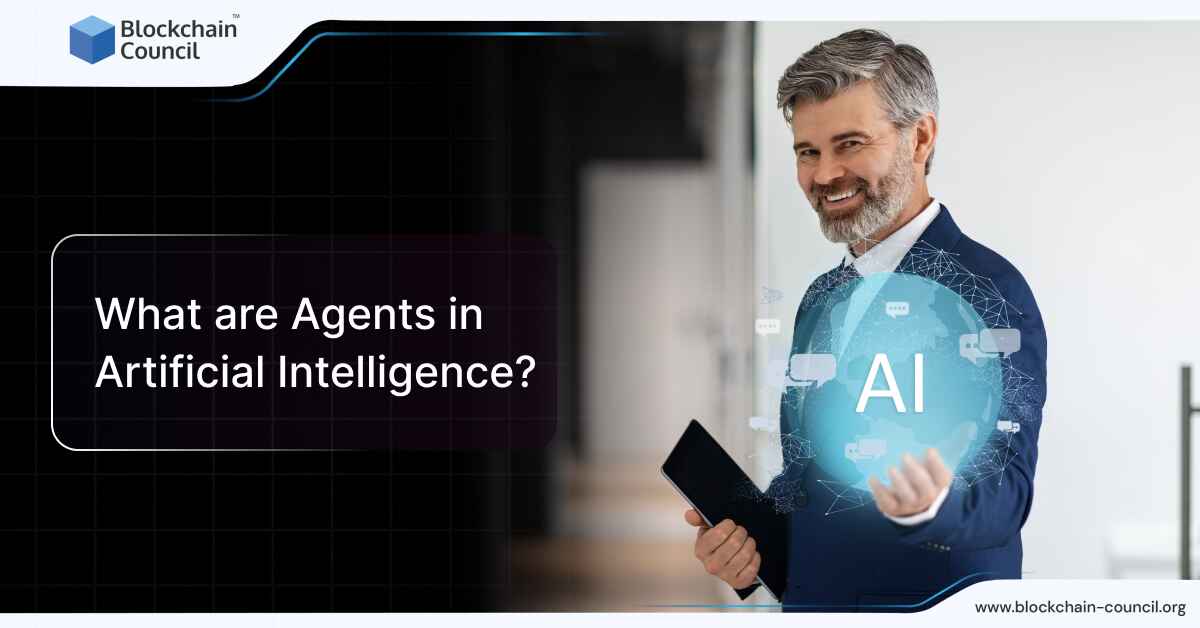
- Blockchain Council
- February 18, 2025
What is Attention in Neural Networks?
In neural networks, “attention” is a technique that allows models to focus on specific parts of their input data that are most relevant to the task at hand. For example, if you’re reading a book and looking for a specific piece of information, you’ll likely skim through the pages, paying more attention to sections that seem relevant.
Your brain focuses on the most important parts instead of looking at every word equally. Similarly, attention mechanisms in neural networks enable them to highlight important information while disregarding the less important data. Attention mechanisms assign different weights to different parts of the input data. These weights are dynamically adjusted during the learning process.
Neural Networks Use Attention for Code Generation
For code generation, neural networks apply attention to determine which parts of the input (like previous code snippets, instructions, or comments) are most relevant to generate the next piece of code. This process is somewhat similar to a programmer recalling syntax or command functions when writing new code. Here’s a simple breakdown of how this works:
- Input Processing: The network takes in the coding task or problem as input.
- Relevance Determination: Using the attention mechanism, the network identifies key parts of the input that are crucial for generating correct and efficient code.
- Code Output: Based on the focused areas, the neural network produces the appropriate code, piece by piece, ensuring that it fits the task requirements and constraints.
In practice, attention in code generation typically involves transformers, a type of neural network architecture. Transformers utilize self-attention, which allows the model to weigh the importance of different input tokens relative to each other. For example, when generating a new line of code, the model can focus on related variables, functions, and structures from earlier in the code.
A common approach is an encoder-decoder model, where the encoder processes the input, and the decoder generates the output code. The attention mechanism helps the decoder to selectively focus on relevant parts of the encoded input, ensuring that the generated code is coherent and contextually appropriate.
What is Human Attention in Code Understanding?
Human attention in code understanding refers to the focus and mental effort that people apply when they read and comprehend computer code. Unlike a quick scan of a text or image, understanding code requires a person to consider both the details and the overall structure simultaneously. Coders often need to remember variables, track function calls, and predict the effects of loops and conditions.
This type of attention is active and involves constantly shifting focus between different parts of the code to build a comprehensive understanding. For example, when debugging, they might concentrate on lines that likely contain errors, while code reviews may focus on overall structure and logic.
Methods to Measure Human Attention
Researchers use various techniques to measure human attention in code understanding. One common method is eye-tracking, which involves using specialized equipment to record where and for how long a person looks at different parts of the code. This data can reveal which parts of the code draw the most attention and how attention shifts as the programmer reads through the code.
Another key method is fixation analysis, which looks at the points where the eyes are relatively stationary, typically lasting between 100 to 300 milliseconds. These fixations are critical because they represent moments of focused cognitive processing. By analyzing fixation patterns, researchers can infer which parts of the code require more cognitive effort and are likely more complex or problematic.
In a controlled study with programmers, eye-tracking data showed how often and for how long programmers fixate on different tokens in the code. Further, Realeyes, a technology company, has developed advanced methods to measure visual attention more holistically. They use deep-learning AI to assess attention by analyzing indicators such as head pose, eye movement, and facial expressions.
How Do Neural and Human Attentions Differ in Code Generation?
When exploring how neural networks and humans focus while writing code, it’s important to recognize the fundamental differences between these two forms of attention.
Methodology:
- Human Attention: Humans use techniques like reading code comments, understanding variable names, and recognizing common coding patterns. They often debug and refine code manually, relying on their problem-solving skills and experience.
- Neural Attention: Neural models, such as those using self-attention mechanisms, break down the code into smaller pieces and analyze these pieces to predict the next token or line of code. They do not understand the code as humans do but recognize patterns and correlations from large datasets.
Flexibility and Adaptation:
- Human Attention: Humans can easily adapt to new programming languages or unusual coding styles. They use creativity and experience to solve problems or optimize code, even under unusual constraints.
- Neural Attention: While neural models adapt based on the data they’ve been trained on, their adaptability is confined to the scope of their training data. Their performance can decrease significantly if faced with a coding style or language not present in their training set.
Focus and Priority:
- Human Attention: When humans read and write code, they focus on understanding the logic, intent, and structure. They use their experience to identify key parts of the code and understand its purpose. This process involves a lot of contextual and semantic understanding.
- Neural Attention: Neural networks (like those used in AI-driven code generation, GPT-4), on the other hand, use mathematical models to determine which parts of the input data are most relevant for generating output. These models don’t really understand the ‘why’ behind code practices. They do this by assigning weights to different parts of the input, which helps the model decide which information to use for generating code. These weights are learned during training and are based on patterns in the data rather than understanding or intent.
Context Handling:
- Human Attention: Humans can easily handle long-term dependencies in code. They remember the overall structure and the purpose of the code, even if they are looking at a small part of it.
- Neural Attention: Neural networks use mechanisms like transformers to handle dependencies. These mechanisms allow models to consider the entire context of the code but can struggle with very long sequences unless specifically designed to manage such scenarios.
Error Patterns and Trust:
- Error Patterns: An analysis of incorrect code snippets generated by neural models revealed common error patterns linked to their attention mechanisms. Recognizing these patterns can help in refining models to better align with human coding practices. Humans often trust models that adopt human-like attention mechanisms more, as they are more likely to adhere to human standards of logic and coherence.
- Trust: Trust in code generation models depends on their reliability and consistency. Humans tend to trust models that consistently produce high-quality code and can explain their reasoning. Explainability remains a challenge for neural models, making human oversight crucial.
Alignment and Misalignment:
- Alignment: Neural attention models can align with human focus in some aspects, especially when trained on large datasets that include human-like patterns and practices. They can generate code that follows common structures and standards.
- Misalignment: Studies have shown significant misalignment between where neural models focus their attention and where human programmers would. Neural models might focus on syntactic elements that frequently occur together in their training data, whereas humans consider semantic correctness and broader applicability more heavily. This misalignment can lead to inaccuracies in generated code, especially when the task deviates from common patterns found in the training data.
Methods of Attention Calculation:
- Human Attention: Researchers measure human attention using techniques like eye-tracking, which records where and for how long a programmer looks at different parts of the code. This data helps in understanding focus areas and cognitive processes.
- Neural Attention: Neural models calculate attention using mechanisms like self-attention, where the model assigns weights to input tokens based on their relevance to the task. These weights guide the model in focusing on important parts of the input data, enhancing code generation accuracy. Methods include:
- Self-Attention: Used in transformer models to track long-term dependencies in text data.
- Gradient-Based: Analyzes how changes in input features affect the output, helping identify influential tokens.
- Perturbation-Based: Methods like LIME and SHAP (SHapley Additive exPlanations) modify inputs and observe changes to determine token importance, ensuring accuracy by requiring many samples.
Learning and Adaptation:
- Human Attention: Humans learn from mistakes and adapt their coding style and problem-solving approaches over time based on a deep understanding of programming principles.
- Neural Attention: Neural models improve through training on more data, adjusting the weights assigned to different parts of the input data, and improving accuracy based on feedback from previous predictions.
Are Neural Attention Mechanisms Similar to Human Attention?
Neural attention mechanisms and human attention share a similar basic concept: focusing on specific parts of information while ignoring others. However, as we have discussed above, the way they function is quite different.
In neural networks, attention mechanisms enable models to give different weights to different parts of the input, which helps in tasks like code generation by emphasizing the most important features.
However, human attention operates in a more dynamic and context-aware manner. Humans can shift focus based on a broader understanding of the task and environment. In contrast, neural attention mechanisms, particularly in models like Transformers, rely on predefined algorithms to assign importance to input elements. This process is systematic and lacks the intuitive, flexible nature of human attention.
For instance, in code generation, neural models like GPT-4 use self-attention to determine the relevance of different tokens in the input sequence. This approach can handle long-range dependencies in data, but it doesn’t adapt in real-time based on external factors as human attention does.
Can Neural Models Be Improved to Mimic Human Attention?
Improving neural models to more closely mimic human attention is a topic of ongoing research. The goal is to make AI systems more adaptive, interpretable, and capable of handling complex, real-world tasks as efficiently as humans. For instance, incorporating mechanisms that allow AI to recognize context and adjust its focus dynamically, similar to human attention, could significantly enhance performance. This involves not just technical advancements in how attention mechanisms are designed but also integrating insights from cognitive science and psychology to better understand how humans prioritize sensory information.
Current research includes efforts to map and compare human and computational attention to improve the interpretability of neural networks. For example, studies involving text classification have shown that by analyzing where humans and machines focus their attention, researchers can refine AI models to better align with human thought processes. This includes understanding which parts of data are most relevant for a given task and how attention distribution affects the outcome.
To approximate human-like attention more closely, researchers are exploring several approaches:
| Technique | Description |
| Multi-Head Attention | Uses multiple attention heads to capture different aspects of the input. This helps the model understand various contextual nuances, similar to how humans can focus on multiple elements of a task simultaneously. |
| Gradient-Based and Perturbation-Based Methods | Assesses the importance of input features by examining changes in the model’s output when input elements are modified. This method helps understand and potentially mimic the flexible focus of human attention. |
| Incorporating External Feedback | Integrates user feedback to make models more adaptive. If a user corrects the model’s output, it can adjust its attention mechanism to avoid similar errors in the future, aligning with how humans learn and adjust based on experience. |
| Reinforcement Learning | Applies reinforcement learning techniques to make attention mechanisms more adaptive. The model is rewarded for focusing on relevant parts of the input, similar to how humans prioritize important information. |
What Role Do Large Language Models (LLMs) Play?
Neural attention allows large language models (LLMs) such as GPT-4 to generate contextually relevant and accurate code snippets from natural language descriptions. Neural attention helps the model “decide” what parts of the input are most relevant for producing the correct output, making it an essential part of how these models work.
Large Language Models (LLMs) such as OpenAI’s GPT, Codex, and Google’s BERT play a significant role in code generation. They can understand and generate code by leveraging vast amounts of programming data. These models are trained on diverse codebases, enabling them to produce code snippets, complete functions, and even write entire programs based on natural language descriptions.
LLMs use a metric called Pass@k to evaluate their performance in code generation. This measures how many correct solutions are found in a set of generated code samples. For example, Codex achieves 28.8% in Pass@1 (correct solution in the first attempt) and 70.2% in Pass@100 (correct solution in the first 100 attempts). These models also use similarity metrics like BLEU and CodeBLEU to ensure the generated code closely matches ground-truth solutions.
Conclusion
Comparing neural attention vs human attention for code generation reveals distinct strengths. Machines excel in speed and accuracy, while humans bring creativity and problem-solving skills. Understanding these differences helps us appreciate the contributions of both. As technology advances, the collaboration between humans and AI in code generation promises to be an exciting development for the future of programming.
FAQ’s
How does neural attention work in code generation?
- Neural attention allows models to focus on essential parts of input data.
- It assigns weights to different input elements to highlight relevant information.
- The model dynamically adjusts these weights during the learning process.
- This helps in generating accurate and contextually relevant code.
How do humans focus when understanding code?
- Humans read code comments and understand variable names.
- They recognize coding patterns and track function calls.
- They shift focus between different parts of the code for a comprehensive understanding.
- Debugging involves concentrating on lines likely to contain errors.
What are the main differences between neural and human attention in coding?
- Methodology: Humans use experience and problem-solving skills; neural models use patterns from data.
- Flexibility: Humans adapt to new languages and styles easily; neural models are limited to training data.
- Focus: Humans understand logic and structure; neural models focus on patterns and correlations.
- Context Handling: Humans remember overall structure; neural models use mechanisms like transformers.
How is human attention measured in code understanding?
- Eye-tracking records where and for how long a person looks at code.
- Fixation analysis studies points where eyes remain stationary, indicating focused cognitive processing.
- This data helps researchers understand which parts of the code require more cognitive effort.





































































 Guides
Guides News
News Blockchain
Blockchain Cryptocurrency
& Digital Assets
Cryptocurrency
& Digital Assets Web3
Web3 Metaverse & NFTs
Metaverse & NFTs
